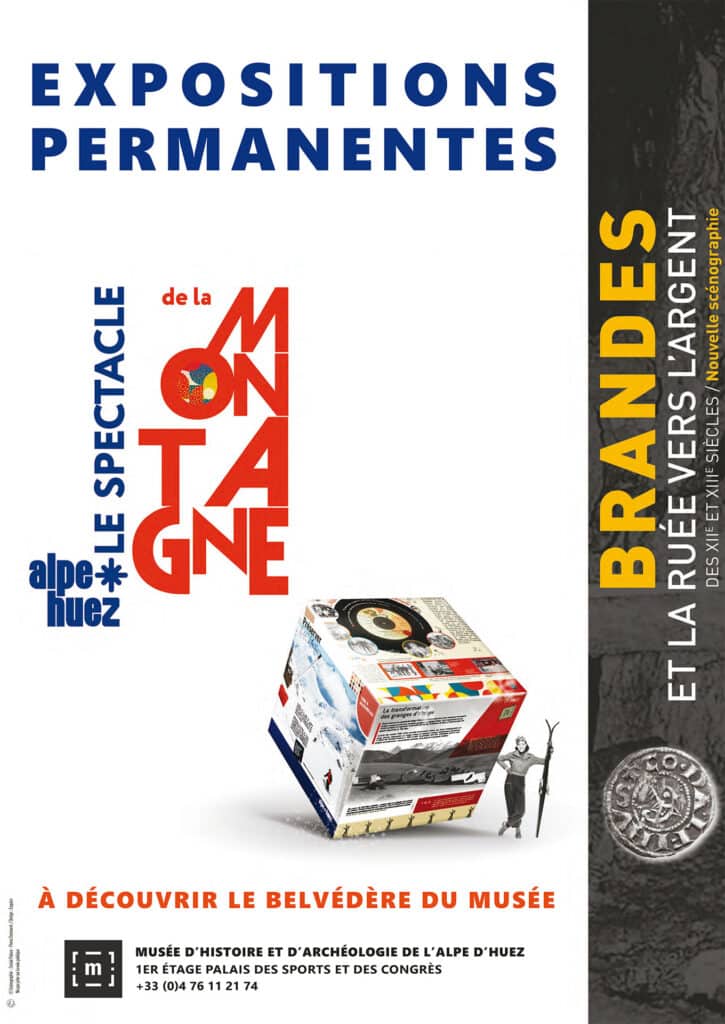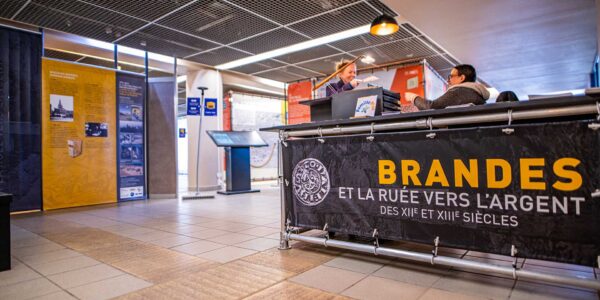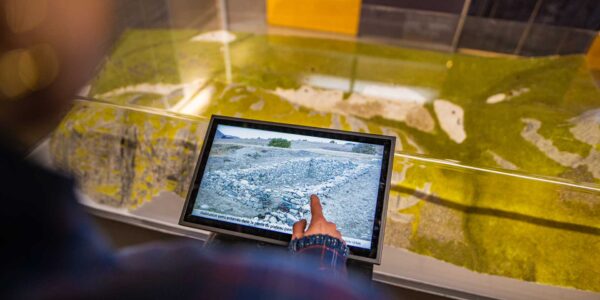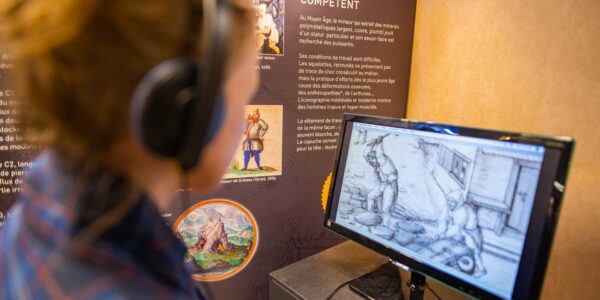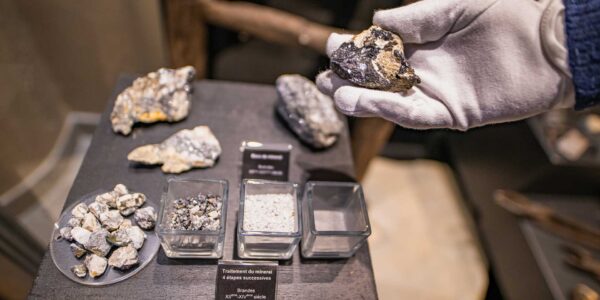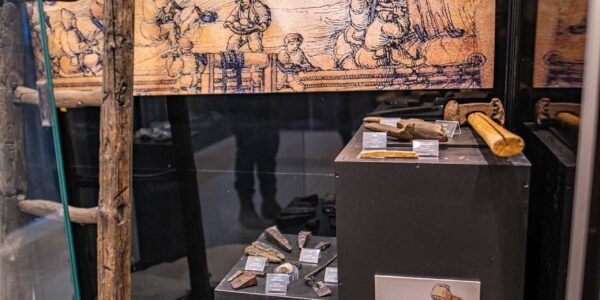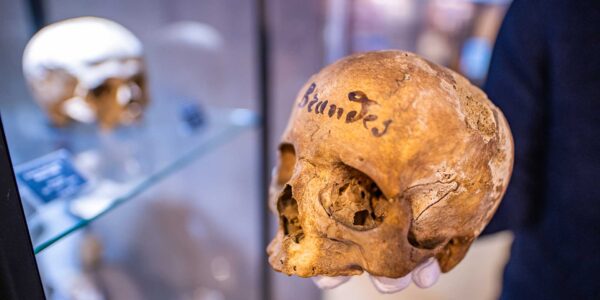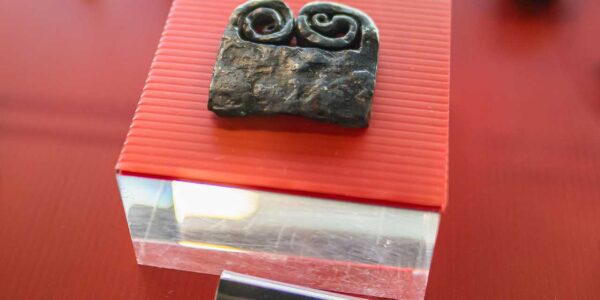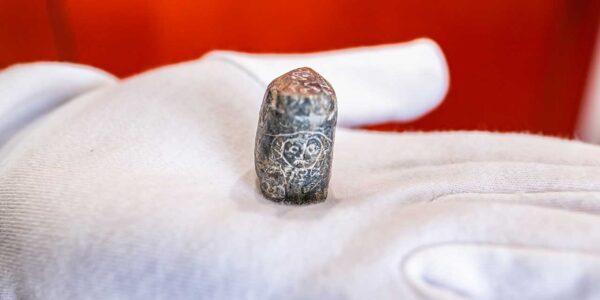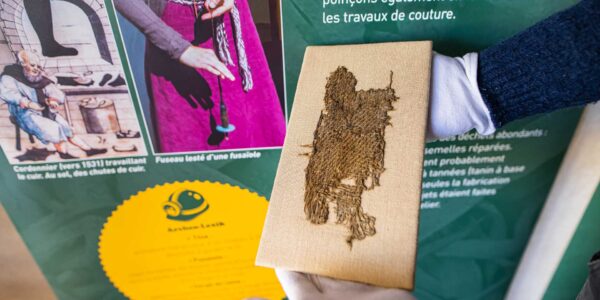Summary
-
Photo gallery of objects from the Alpe d’Huez History and Archaeology Museum (permanent exhibition “Brandes and the silver rush of the 12th and 13th centuries”)
-
A mining and mountain site remarkable for its industrial and technical history and its archaeological remains
-
Video “The Miners’ Village of Brandes” (duration: 2 minutes, 2015 – scientific direction: Marie-Christine Bailly-Maitre / CNRS / INRAP))
AgorAlp, 1er étage, 70 avenue de Brandes, 38750 ALPE D’HUEZ, +33 (0)4 76 11 21 74, accueil.musee@mairie-alpedhuez.fr
The Brandes medieval archeological site, listed as a “Monument Historique” in 1993, is a silver mining village. It was inhabited from the 12th to the 14th century.
Even today, it is the highest known medieval village in Europe (12th-14th), linked to the exploitation of a silver mine.
The site stretches for almost a kilometer and is a fine example of the organization of a village, with its dwellings, symbols of religious power (St Nicolas church) and civil power (shell-keep), and working quarters (crushing, grinding and washing workshops).
Guided tours of Europe’s highest mining village are offered during the summer season to the general public and for groups by prior arrangement.
The public is invited to immerse themselves in the daily life of medieval miners, discovering their working methods, their mode of dress and even their coquetry, and their activities on public holidays.
The medieval silver mines of Brandes-en-Oisans
 Hypothetical reconstruction of the village and castle of Brandes, drawing by P.-Y. Carron, CPI and M.-Ch. Bailly-Maître.
Hypothetical reconstruction of the village and castle of Brandes, drawing by P.-Y. Carron, CPI and M.-Ch. Bailly-Maître.
In the second half of the 12th century, a village was established at an altitude of over 1,800 m, on a high plateau in the heart of the Oisans massif, to exploit a deposit of argentiferous lead. The mine closed in the 1330s due to flooding. The village quickly emptied of its inhabitants.
The Brandes site is exceptional in that it contains all the elements of a large-scale mining operation and a permanent settlement. It also boasts a substantial archive. We had to wait until 1236 for the first written mention of the site. In his will, the Dauphin Guigues-André bequeathed the income from the Brandis argenteria for 3 years to build his holy chapel, the church of Saint-André de Grenoble. Numerous documents such as the Probus delphinal survey of 1250, the 1261 reconnaissance, the accounts of the Oisans châtellenie 1313-1354, the acts of a lawsuit that marked the end of mining between 1321 and 1327, and the surveys for the Transport du Dauphiné in 1339 enable us to follow the history of this village.
An archaeological dig
As for the archaeology, which really began on the site in 1977, it provides material information both on the organization of a permanent settlement at an altitude of 1,800 m and on the operation of a major farm, and provides chronological elements that allow us to affirm that the site already existed in the middle of the 12th century.
 The chapel
The chapel
The religious site is located on a narrow rocky spur at the western end of the Saint Nicolas rock. Initially a simple chapel built on the rock, it was enlarged in the first half of the 13th century to become a parish church. In the 17th century, a chapel was installed in the choir of the parish church. In the 19th century, all that remained was an oratory containing the polychrome wooden statue of the saint. The necropolis surrounds the parish church.
The exploitation of the silver mine
All stages of mining are present at Brandes: extraction, crushing, grinding and washing of ore.
Extraction takes place in several open-cast and underground mine workings, at altitudes ranging from 1700m to 2700m. Extraction is carried out by fire, as the flames soften and loosen the rock, which can then be knocked away with a pointerolle. In the galleries, miners sometimes walk on floors suspended in the void, lighting their way with lamps. An exceptional discovery, medieval sled tracks made of logs to facilitate the passage of sledges are still preserved in some galleries.
The ore is then crushed in mortars, simple excavated stones, using stone strikers. It can then be crushed using millstones powered by hydraulic energy. Lastly, the ore is washed to separate it from its gangue. This is done in vast basins alongside a large water inlet, using a complex system.
Despite the scale of this major mining operation (150 to 200 people lived and depended on the mine), it declined throughout the 14th century for technical reasons (depth of the galleries, problems with water drainage (due in particular to climatic cooling – beginning of the Little Ice Age /1330-1850/ – and waste management…) and came to a definitive halt before the middle of the 14th century.
The Miners’ Village of Brandes
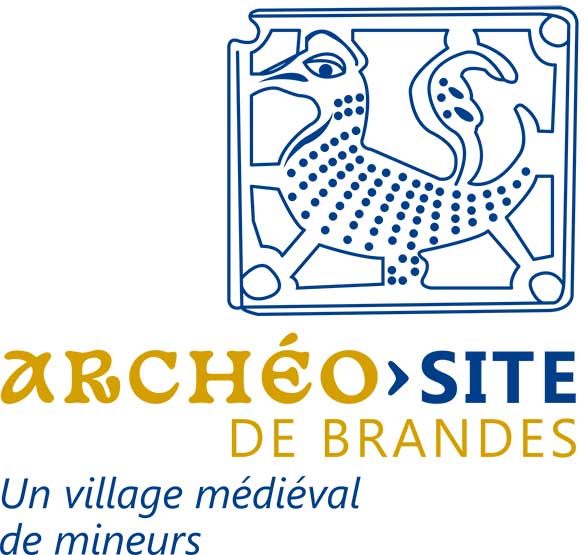
Text: Marie-Christine Bailly-Maître, former curator of the Alpe d’Huez Museum of History and Archaeology and head of the Brandes archaeological excavations.
Photo credit: Lionel Royet / OT Alpe d’Huez, x.
Video credit: Marie-Christine Bailly-Maitre / CNRS / INRAP, City of Science and Industry / University of Lorraine – IUT Saint-Dié-des-Vosges, 2015 / Library of the National School of Fine Arts



